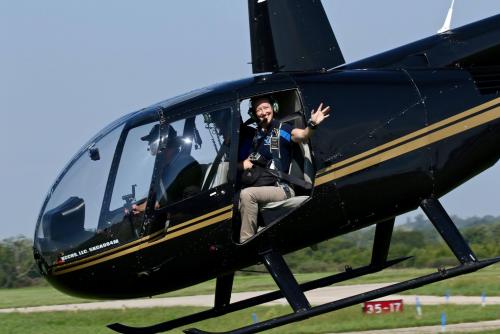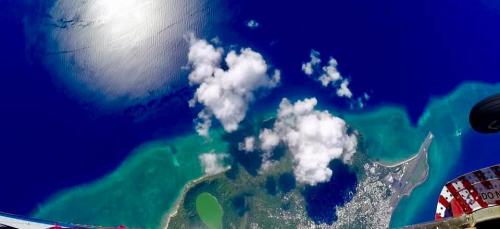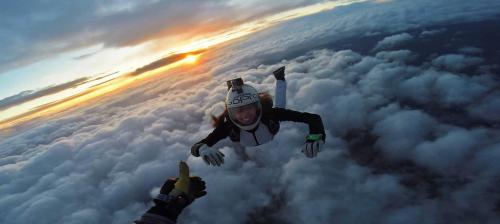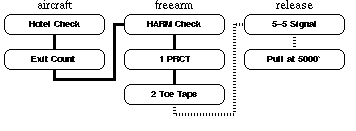Jen Sharp Talks About Healthy Skydiving Culture
It’s Not What You Do (Or the Size of Your Dropzone): It’s How You Do It
Jen Sharp -- since 2017, the Director of IT for the USPA -- is a woman of note for a long list of reasons. Jen’s a font of wisdom, a truly badass skydiving instructor and a businesswoman of uncommon strength and clarity (proof: she spent 21 years owning a successful small drop zone in Kansas). When she speaks, one should do themselves the favor of listening.
If you don’t already know her story: Jen has been jumping since she was 18 years old. She opened Skydive Kansas directly after her college graduation, when she had a full-time teaching job and only 300 jumps. (Even then, she’d already been working as a static line jumpmaster, instructor, packer, rigger and radio-wrangler. Supergirl, basically.) Since then, she has traveled extensively as a jumper, an instructor and a public speaker.
It was 1995 when Jen opened her dropzone: the days of saving up your vacation days for the World Freefall Convention; of spending Friday night to Sunday dinnertime on the dropzone; of single-plane 182 dropzones all over the place and, like, eight places you could go to fulfill a turbine craving.
The close knit of those intimate little club-format dropzones has, of course, steadily unwound since then in most places. Adding skydiving to the schedule has become much more of a surgical strike: you get to the DZ at 10am and manifest immediately so you can make it to Crossfit by 4. You sift through regional skydiving events on Facebook, few of which require more than a handful of minutes’ worth of planning. You drive hours for a turbine.
Jen takes on her alter ego, “Stu,” as a student (get it?!) on an AFF eval jump.
It would be easy to mourn the loss of the small dropzone as an entity -- there are precious few of them left, proportionally to their previous numbers -- but Jen refuses to. For her, the “small dropzone feel” is the culture we should all be striving for, even if there happen to be seven Skyvans in the hangar archipelago.
“The best vibes are at the places that keep the actual perspective, not just the party line, that we are all just people and all just want to have fun,” she begins. “The ones that embody safety in the active choices to care for each other. The places that assume the best in people. Luckily, that’s really simple to do.”
Simple? Yes. Easy? Not necessarily, but according to Jen, that’s what we are really going for here: an inviting culture. Example after example proves that business success will follow that beacon significantly more reliably than it will follow volume.
“What that culture is not,” Jen clarifies, “is the culture of the burned-out tandem instructor, hauling meat; a culture where an instructor never connects with their student; where they don’t even call them students, but passengers. If you call them a passenger, they are one-and-done. They know their place with you. But if you call them a student -- and you truly think of them that way -- the whole dynamic is going to be different.”
How do you change the dynamic? By changing the way you see the person in the harness.
“The public we meet is awesome,” she continues. “And we forget that! We totally forget this as instructors -- especially, tandem instructors. We forget that the person we’re taking is amazing. Why? Because they are not on the couch. A normal person is just sitting there on the couch on the weekend or maybe vacuuming or making snacks, drinking beer and watching TV. But this person is okay with being uncomfortable; with putting their life in your hands. They are excited about it, and they are trusting you. That already makes them a really cool person.”
Doing an interview at PIA 2015.
“If you want to see the average person, go to Walmart,” she laughs. “That’s the ‘average person.’ The person walking on a dropzone for the first time is not the average person. They are already living on a level that we should resonate with, especially since they’re new and they need our guidance.”
For Jen, in fact, the “passenger” moniker is no less than a dishonor.
“Homogenizing everyone who walks in the door into a ‘passenger’ has a couple of outcomes,” Jen explains. “It burns tandem instructors out. It burns the public out against skydiving when we make the assumption that they don’t know anything. Where did we even get that idea in the first place? Sure, they don’t know anything about skydiving, but they probably know a lot about something else.”
“When I would take tandem students, I didn’t know who they were, necessarily,” she muses. “I would always ask ‘why are you here today,’ but they weren’t always going to tell their life story. I would find out later that we had just taken a brain surgeon, or the senator from some western county in Kansas. You never know who that person is. They’re just walking around in their sweats because you told them to dress comfortably. So -- if you’re starting to feel the burnout, try allowing yourself to be curious about them. And, if you’re a dropzone owner, strive to instill that curiosity in your instructor staff.”
Who knows: That curiosity, manifesting as totally authentic friendliness, could end up defining a regional dropzone’s niche.
“If drop zones realize how many kinds of niches there are to occupy,” Jen says, “I don’t think we’d ever talk in terms of ‘small,’ ‘medium’ and ‘large’ dropzone. You can occupy a really strong, functional cultural niche without being the biggest DZ around, or having the most airplanes, or doing the most tandems. As a dropzone, your niche really comes from whatever it is that you want to bring to the table -- and your resources and your passions -- and you succeed when you fulfill that to the max. I think a lot of places are figuring that out, and that’s contributing to the fact that we now have more of a variety of dropzones than we ever have before.”
Y’know that bit about a cultural "niche"? Jen insists that it’s not just about feels. It’s about returns, too. A strong niche can turn into a marketing advantage.
“Not every dropzone should compete on price,” Jen notes. “It's conceivable for a smaller DZ to actually make more profit by doing less jumps. Profit is not the same as gross.”
“It’s as straightforward as reaching the fullest manifestation of what you’re capable of doing,” she adds, smiling, “and, of course, always trying to get better.”
By nettenette, in General,







